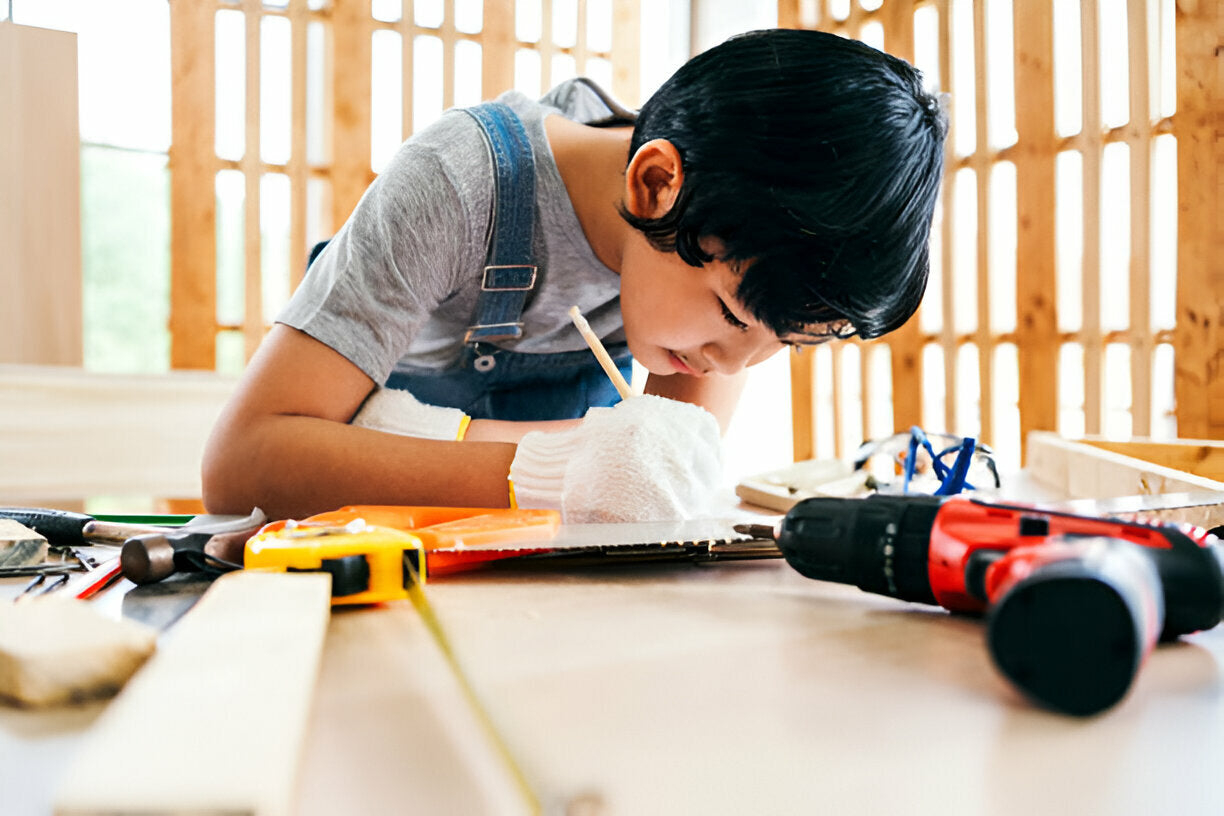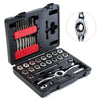
Kids Tool Kit Organization: Storage and Maintenance Tips
Are you tired of constantly searching for misplaced tools in your kids tool kit? Keeping a well-organized and maintained tool kit is essential for both safety and efficiency. In this blog post, we will explore the importance of tool kit organization and maintenance, along with practical tips on how to achieve it. Let's dive in and transform the chaos into order!
Storage Solutions for Your Kids Tool Kit
Finding the right storage solution for your kids' tool kit is crucial for maintaining an organized and functional space. In this section, we will explore different storage options and provide insights on how to choose the most suitable one for your needs.
1. Choosing the Right Storage Solution
When selecting a storage solution for your kids' tool kit, keep the following factors in mind:
a) Size and Portability: Consider the size of the tool kit and the ease of portability. If your child often works on projects in different locations, a lightweight and portable storage solution, such as a tool bag or a small toolbox, might be ideal. However, if the tool kit will primarily stay in one place, a larger storage option, such as a tool chest or a wall-mounted pegboard, could be more suitable.
b) Durability: Look for a storage solution that is durable and can withstand the rough handling that often comes with children's activities. Opt for high-quality materials that can withstand the weight of the tools and resist wear and tear.
c) Compartments and Organization: Consider the storage solution's compartments and organization features. Look for dividers, trays, or built-in slots that can help keep the tools separated and prevent them from getting tangled or damaged. This allows for easy access and ensures that each tool has its designated spot.
d) Safety Features: Safety should always be a priority, especially when it comes to storing sharp or potentially dangerous tools. Choose a storage solution that has secure closures, such as latches or locks, to prevent accidental openings and keep curious hands away from hazardous tools.
2. Innovative Storage Ideas
Now that you have an understanding of what to look for in a storage solution, let's explore some innovative ideas to enhance the organization of your kids' tool kit:
a) Magnetic Strips: Install magnetic strips on a wall or inside a storage cabinet to hold metal tools securely. This not only keeps them organized and visible but also adds a unique touch to the tool storage area.
b) Pegboards: Utilize a pegboard system with hooks and shelves to hang and display tools. This allows for easy visibility and quick access to the tools, and it can be customized to accommodate different sizes and shapes of tools.
c) Tool Racks or Tool Chests: Invest in a tool rack or a tool chest with multiple drawers and compartments. These provide ample storage space and help keep tools organized, especially if your child has an extensive collection.
d) Stackable Bins or Totes: Use stackable bins or totes to store tools and accessories. Label each bin for specific tool categories, such as "screwdrivers" or "wrenches," to ensure easy identification and retrieval.
3. Proper Placement for Easy Access
Once you have chosen the storage solution, consider the placement of the tool kit for easy access. Keep in mind the following tips:
a) Accessibility: Place the tool kit in a location that is easily accessible to your child. This can be a designated shelf, a workbench, or a corner of the garage. The goal is to make it convenient for your child to retrieve and return tools without assistance.
b) Child-Friendly Height: If your child is young or of shorter stature, ensure that the tool kit is placed at a height that they can comfortably reach. This encourages independence and allows them to take ownership of their tools.
By selecting the right storage solution and implementing innovative ideas, you can create an organized and accessible space for your kids' tool kit. In the next section, we will focus on the maintenance of the tools to ensure their longevity and optimal performance.
How to Maintain Your Kids Tool Kit
Proper maintenance of your kids' tool kit is essential to ensure the longevity and optimal performance of the tools. In this section, we will explore the steps and practices to help you maintain your kids' tools effectively.
1. Regularly Inspect Tools for Damage
Regular inspections are crucial to identify any signs of damage or wear. Set a routine to inspect the tools in your kids' tool kit and look for the following:
a) Bent or Damaged Handles: Check for any bent or cracked handles on tools like hammers, screwdrivers, or pliers. Damaged handles can affect the grip and usability of the tools, making them unsafe to use.
b) Rust or Corrosion: Examine metal tools for any signs of rust or corrosion. If you notice any, use a wire brush or sandpaper to remove the rust and apply a thin layer of lubricant to prevent further corrosion.
c) Blunt or Damaged Cutting Edges: Inspect cutting tools, such as scissors or shears, for blunt or damaged edges. Sharpen or replace them as needed to ensure smooth and efficient cutting.
d) Loose or Missing Parts: Check for loose or missing parts, such as screws or nuts, on adjustable tools like wrenches or pliers. Tighten any loose parts or replace missing ones to maintain the functionality of the tools.
2. Cleaning and Caring for Tools
Regular cleaning and proper care contribute to the longevity and performance of the tools. Follow these guidelines for cleaning and caring for your kids' tools:
a) Wipe Down After Use: Encourage your kids to wipe down the tools with a clean cloth after each use. This helps remove any dirt, dust, or debris that can accumulate and affect the functionality of the tools.
b) Oil and Lubricate: Apply a thin layer of lubricant, such as machine oil or silicone spray, to metal tools to prevent rust and keep them operating smoothly. Pay close attention to hinges, joints, and moving parts.
c) Store in a Dry Environment: Ensure that the tool kit and the tools are stored in a dry environment to prevent moisture buildup and potential damage. Avoid storing them in humid areas or exposed to direct sunlight.
d) Keep Sharp Tools Safely: If your kids have access to sharp tools like knives or scissors, teach them how to store these tools safely. Consider using blade covers or sheaths to protect the sharp edges and prevent accidental injuries.
3. When and How to Replace Tools
Over time, tools may become worn out or damaged beyond repair. It's important to know when and how to replace tools to maintain the efficiency and safety of the tool kit. Consider the following:
a) Age and Wear: Tools that are heavily used or show signs of significant wear may need to be replaced. Assess the condition of the tools regularly and make replacements as necessary.
b) Size and Skill Level: As your child grows, their tool requirements may change. Gradually introduce them to more advanced tools and replace smaller or simpler tools with ones that match their growing skill level.
c) Quality and Safety: Invest in high-quality tools that are designed specifically for kids. These tools are often built with safety features and are more durable, ensuring a longer lifespan and a safer experience for your child.
By regularly inspecting, cleaning, and caring for the tools, as well as knowing when to replace them, you can ensure that your kids' tool kit remains in excellent condition and continues to serve their DIY endeavors. In the next section, we will explore how to teach your kids to use and maintain their tool kit safely and responsibly.
Related Article: Tool Kit Challenges: Fun Competitions for Young Builders



